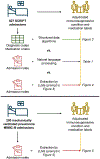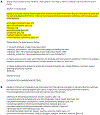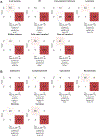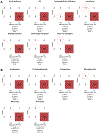Large language models accurately identify immunosuppression in intensive care unit patients
- PMID: 40977378
- PMCID: PMC12490808
- DOI: 10.1093/jamia/ocaf141
Large language models accurately identify immunosuppression in intensive care unit patients
Abstract
Objective: Rule-based structured data algorithms and natural language processing (NLP) approaches applied to unstructured clinical notes have limited accuracy and poor generalizability for identifying immunosuppression. Large language models (LLMs) may effectively identify patients with heterogenous types of immunosuppression from unstructured clinical notes. We compared the performance of LLMs applied to unstructured notes for identifying patients with immunosuppressive conditions or immunosuppressive medication use against 2 baselines: (1) structured data algorithms using diagnosis codes and medication orders and (2) NLP approaches applied to unstructured notes.
Materials and methods: We used hospital admission notes from a primary cohort of 827 intensive care unit (ICU) patients at Northwestern Memorial Hospital and a validation cohort of 200 ICU patients at Beth Israel Deaconess Medical Center, along with diagnosis codes and medication orders from the primary cohort. We evaluated the performance of structured data algorithms, NLP approaches, and LLMs in identifying 7 immunosuppressive conditions and 6 immunosuppressive medications.
Results: In the primary cohort, structured data algorithms achieved peak F1 scores ranging from 0.30 to 0.97 for identifying immunosuppressive conditions and medications. NLP approaches achieved peak F1 scores ranging from 0 to 1. GPT-4o outperformed or matched structured data algorithms and NLP approaches across all conditions and medications, with F1 scores ranging from 0.51 to 1. GPT-4o also performed impressively in our validation cohort (F1 = 1 for 8/13 variables).
Discussion: LLMs, particularly GPT-4o, outperformed structured data algorithms and NLP approaches in identifying immunosuppressive conditions and medications with robust external validation.
Conclusion: LLMs can be applied for improved cohort identification for research purposes.
Keywords: clinical notes; diagnosis codes; immunosuppression; large language model.
© The Author(s) 2025. Published by Oxford University Press on behalf of the American Medical Informatics Association.
Conflict of interest statement
T.L.W. has received research funding from Gilead Sciences to support investigation of the relationship between immunosuppressive conditions and COVID-19 outcomes. Gilead personnel had no involvement in this research. All other authors declare no financial or non-financial competing interests.
Figures





References
-
- FastStats. 2024. Accessed September 10, 2024. https://www.cdc.gov/nchs/fastats/pneumonia.htm
Grants and funding
- R01 HL153122/HL/NHLBI NIH HHS/United States
- U19 AI181102/AI/NIAID NIH HHS/United States
- Canning Thoracic Institute of Northwestern Medicine
- U19AI135964/NH/NIH HHS/United States
- U19 AI135964/AI/NIAID NIH HHS/United States
- 1F31LM014201/NH/NIH HHS/United States
- Simpson Querrey Lung Institute for Translational Science
- Northwestern University Dixon Translational Science Award
- R01 HL149883/HL/NHLBI NIH HHS/United States
- Chicago Biomedical Consortium
- R01HL147290/NH/NIH HHS/United States
- R01HL153312/U19AI135964
- I01 CX001777/CX/CSRD VA/United States
- R01 ES034350/ES/NIEHS NIH HHS/United States
- P01HL154998/NH/NIH HHS/United States
- F31 LM014201/LM/NLM NIH HHS/United States
- K23HL169815/NH/NIH HHS/United States
- P01HL154998/U19AI135964
- U54AG079754/NH/NIH HHS/United States
- P01AG049665/U19AI135964
- R21AG075423/U19AI135964
- R21 AG075423/AG/NIA NIH HHS/United States
- P01AG049665/NH/NIH HHS/United States
- K23 HL169815/HL/NHLBI NIH HHS/United States
- U19AI181102/U19AI135964
- R01 HL173940/HL/NHLBI NIH HHS/United States
- R01HL147575/NH/NIH HHS/United States
- R01HL149883/NH/NIH HHS/United States
- P01 AG049665/AG/NIA NIH HHS/United States
- U01TR003528/NH/NIH HHS/United States
- American Thoracic Society Unrestricted
- I01CX001777/Veterans Administration
- Northwestern University Clinical and Translational Sciences Institute
- R01 HL153312/HL/NHLBI NIH HHS/United States
- U54 AG079754/AG/NIA NIH HHS/United States
- R01 HL158139/HL/NHLBI NIH HHS/United States
- R21 HD107571/HD/NICHD NIH HHS/United States
- R01HL158139/U19AI135964
- R01ES034350/U19AI135964
- CO-US-540-6435/Gilead Sciences
- P01 HL154998/HL/NHLBI NIH HHS/United States
- U01 TR003528/TR/NCATS NIH HHS/United States
- R01HL158139/NH/NIH HHS/United States
- R21AG075423/NH/NIH HHS/United States
- R21HD107571/NH/NIH HHS/United States
- R01 LM013337/LM/NLM NIH HHS/United States
- R01 HL147290/HL/NHLBI NIH HHS/United States
- NH/NIH HHS/United States
- U19AI181102/NH/NIH HHS/United States
- R01LM013337/NH/NIH HHS/United States
- R01 HL147575/HL/NHLBI NIH HHS/United States
LinkOut - more resources
Full Text Sources

